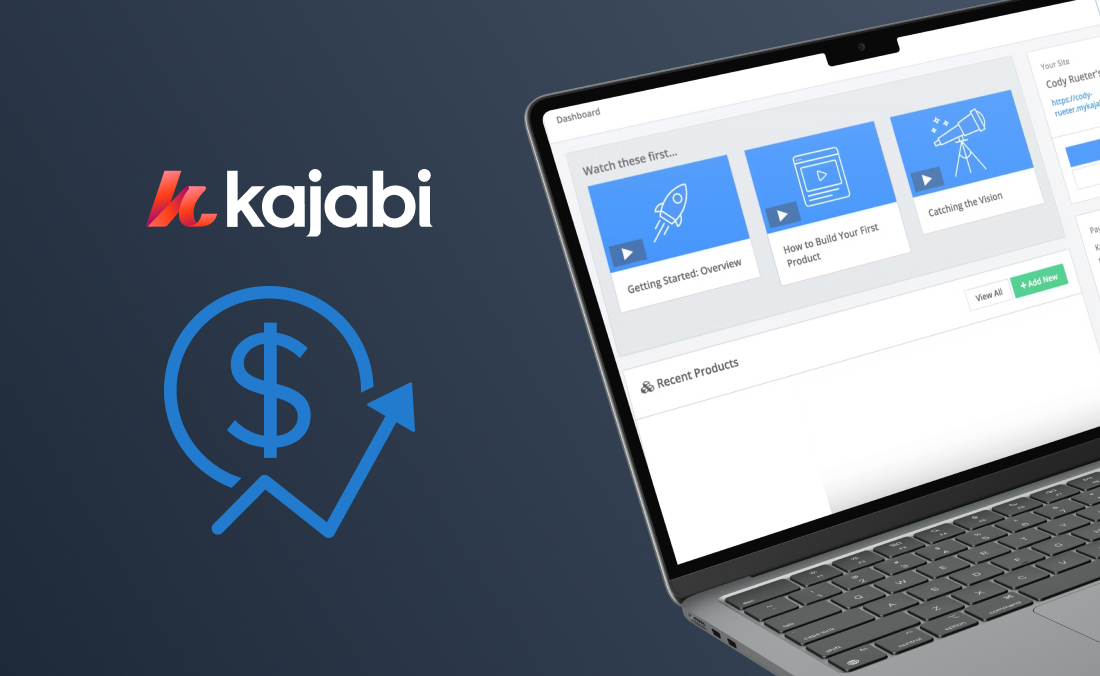This post was written by guest author Dr. Kim Foster, founder of The Wellness Coach Academy
It’s no secret that the demand for online health and wellness services is booming. In today’s digital age, most people seek health, fitness, and well-being advice online first. For those in the health and wellness industry, this shift presents a prime opportunity to reach a broader audience and expand your client base. However, the competition can be fierce, and a clear online marketing strategy is essential to stand out from the crowd.
My name is Dr. Kim Foster, MD and founder of the Wellness Coach Academy. As someone who successfully transitioned from a stable medical career to building a thriving online coaching business, I know firsthand what it takes to attract and retain clients in the wellness space. This post will cover six essential tips that can help you achieve maximum reach growth.
1. Claim Your Space
One of the most important steps in marketing your wellness business online is to define your niche. You’ve probably heard this advice before, but it’s never been more important. The health and wellness industry is vast, encompassing everything from nutrition and fitness to mental health and personal growth and development. Narrowing down to a specific niche allows you to target your ideal clients and differentiate yourself from the competition.
Many of my clients and students start off wanting to help everyone, and I understand their reasoning. The desire to make a positive impact on as many lives as possible is admirable; however, trying to appeal to everyone often means your messaging comes across as general and unrelatable. As a result, you risk appealing to no one. Therefore, it’s much more effective to focus on serving a specific group of people who will benefit from your unique skills and approach.
For instance, one of my coaching students initially aimed to offer general wellness coaching, but she struggled to gain any traction. With some guidance, she decided to focus on helping new moms regain their energy and find balance, which is a passion of hers. This clear niche enabled her to tailor her messaging, create targeted content, and ultimately attract a loyal client base. Another client of mine specialized in plant-based nutrition for busy professionals, which quickly distinguished her in a crowded market and led to significant business growth. When considering your business, think about what you’re passionate about and have real experience with, so you can define your niche.

Benefits of Defining Your Niche
Targeted Audience
A clear niche helps you attract clients who are specifically looking for the services you offer.
Stand Out
Specializing in a niche allows you to become an expert in that area, making it easier to stand out in a crowded market.
Effective Marketing
With a well-defined niche, you can create more focused and effective marketing campaigns.
Actionable Steps
1. Market Research
Analyze the market to identify gaps and opportunities. Look for areas that are underserved or where you have a unique advantage.
2. Self-Assessment
Evaluate your skills, interests, and passions. Choose a niche that aligns with your expertise and enthusiasm.
3. Test and Refine
Start with a broad idea and refine your niche based on feedback and results. Be flexible and adjust your focus as needed.
2. Build a Magnetic Website
Your website is often the first impression potential clients have of your business. A professional and user-friendly website is essential for establishing credibility and attracting clients.
One of my students initially resisted building a website because she felt overwhelmed and intimidated by the technical aspects. However, with support of a gorgeous template, she managed to launch her site without having to struggle!
After launching her website, she was suddenly proud to talk about her business and point people to her site to learn more. This newfound confidence boosted her sense of legitimacy as a professional. She also began to see increased traffic and attention, which ultimately propelled her into a successful career. Her website became a crucial tool for connecting with her audience and growing her business.

Key Elements of a Wellness Website
Clear Messaging
Your website should clearly communicate who you are, what you offer, and how you can help potential clients.
High-Quality Images
Use professional photos that reflect your brand and resonate with your target audience.
Easy Navigation
Ensure your website is easy to navigate, with a clean and organized layout.
Mobile Optimization
With more people accessing websites on their phones, it’s crucial to have a mobile-friendly design.
Actionable Steps
1. Choose a Platform
Select a website platform that suits your needs.
2. Consider Hiring a Web Designer
If possible, invest in a web designer to create a polished and customized site. If that’s not in your budget, you can use a beautiful personal brand page template, like those offered by Kartra.
3. Optimize for SEO
Use search engine optimization (SEO) techniques to improve your website’s visibility in search engine results. This isn’t necessary to do if you’re using other channels or platforms to bring awareness to your brand and send traffic to your website, but it never hurts to double down on several marketing strategies.
3. Create Valuable Content
Content marketing is a powerful tool for establishing authority and attracting clients. By providing valuable and informative content, you can build trust with your audience and position yourself as an expert in your field.
In the early days of my coaching business, I started a blog where I shared tips and advice based on my experiences. My blog posts not only attracted a lot of traffic but also helped me build a loyal community of followers who appreciated my insights and trusted my expertise. Some of my most successful students do something similar, although it doesn’t have to be a blog. It could be a podcast, YouTube channel, or social media platform like Instagram.

Types of Content
Blog Posts
Write articles on topics relevant to your niche, offering tips, advice, and insights.
Videos
Create engaging videos, such as tutorials, workout routines, or client success stories.
Podcasts
Start a podcast to share your expertise or interview other experts in your field.
Actionable Steps
1. Develop a Content Strategy
Plan your content by identifying topics that will resonate with your audience. Create a content calendar to help you plan, implement, and stay consistent.
2. Create High-Quality Content
Focus on producing content that is informative, engaging, relatable, and well-researched.
3. Promote Your Content
Share your content on your website, social media, and email newsletters to reach a wider audience. If it’s in your budget, you could also run paid ads.
4. Build Your Audience by Offering Free Resources
We emphasize this strategy inside the Wellness Coach Academy. One of my students was initially skeptical about the value of an email list, but she decided to follow our advice. She created a simple, yet highly targeted guide specifically designed for her dream clients—busy working moms who wanted to eat healthier but felt they didn’t have the time.
She offered the guide as a free download in exchange for email addresses on multiple platforms: Instagram, guest blog posts, and podcast interviews. This approach helped her build a substantial, highly engaged email list. When she launched her course on healthy meal planning for busy moms, she had a ready-made audience eager to purchase. This resulted in a successful launch and a thriving business.

Types of Free Resources
- Checklists & Cheat Sheets
- Printables & Planners
- Recipe Collections
- Guides
- Challenges
- Mini-Courses
Actionable Steps
1. Create Valuable Resources
Develop resources that address common pain points or interests of your target audience.
2. Promote Your Resources
Use social media, email marketing, and your website to promote your free offerings.
3. Follow Up
Engage with participants and follow up with them to nurture relationships and convert them into clients.
5. Host Webinars and Online Workshops
Webinars and online workshops are incredibly effective ways to engage with potential clients, demonstrate your expertise, and build trust.
I remember hosting my first webinar — I was terrified! My first fear (what if nobody signs up?) was quickly replaced by my second fear (oh my gosh, so many people have signed up!).
However, in spite of those fears, I successfully hosted the webinar and it was a huge factor in elevating my business to the next level. It led to several new coaching clients who resonated with my message and approach; it encouraged me to keep hosting more webinars, so I could improve my delivery with each event. I learned so much from the direct interaction with my audience and sharing knowledge in real-time.

Benefits of Webinars and Workshops
Direct Interaction
Engage with your audience in real-time, answering their questions and addressing their concerns.
Showcase Expertise
Use webinars and workshops to showcase your knowledge and skills.
Lead Generation
Capture leads by requiring registration for your webinars and workshops.
Actionable Steps
1. Select Topics
Choose topics that are relevant and valuable to your audience. Consider addressing common questions or challenges.
2. Promote Your Events
Use social media, email marketing, and your website to promote your webinars and workshops.
3. Engage Participants
Encourage participation by asking questions, using polls, and offering interactive elements.
4. Follow Up
Send follow-up emails to participants, thanking them for attending and offering additional resources or consultations.
6. Get Featured
Writing guest blog posts and articles for established health and wellness websites and magazines can significantly increase your exposure and credibility.
For many of my students, writing guest articles for various health and wellness blogs has been a game-changer. Each published article brings new visitors to their website and also enhances their credibility as an expert in their niche. For one of my students, a single guest post on a popular wellness blog resulted in a flood of new leads who appreciated her unique perspective.
Benefits of Guest Blogging
Increased Exposure
Reach a wider audience by leveraging the readership of established publications.
Authority Building
Position yourself as an expert by contributing high-quality content to respected outlets.
Backlinks
Get popular websites to link to your website (known as backlinking), which can improve your search engine rankings.
Actionable Steps
1. Identify Target Publications
Research and identify websites and magazines that cater to your target audience.
2. Pitch Article Ideas
Craft compelling pitches that highlight the value and relevance of your proposed articles.
3. Write High-Quality Content
Ensure your articles are well-researched, informative, and aligned with the publication’s guidelines.
4. Promote Your Articles
Share your guest posts on your website and social media to maximize their impact.
Conclusion
In the bustling realm of online health and wellness, standing out and attracting clients is an art that requires a savvy and multifaceted approach. And, even though I’ve packed this article with numerous strategies, my advice is to start with just one.
By harnessing the power of a single strategy to start with, you can begin to masterfully market your wellness business and see your client base flourish. From there, you can level up and layer on additional tactics.
So, dive in, stay inspired, and get out there — your dream clients are waiting for you!

Dr. Kim Foster is an MD-turned-coach and founder of the Wellness Coach Academy, where she helps aspiring coaches launch and grow successful businesses that give them freedom and fulfillment. Subscribe to her popular YouTube channel or visit her website to sign up for free business and wellness tips.
Photo credit: Linda Mackie Creative


